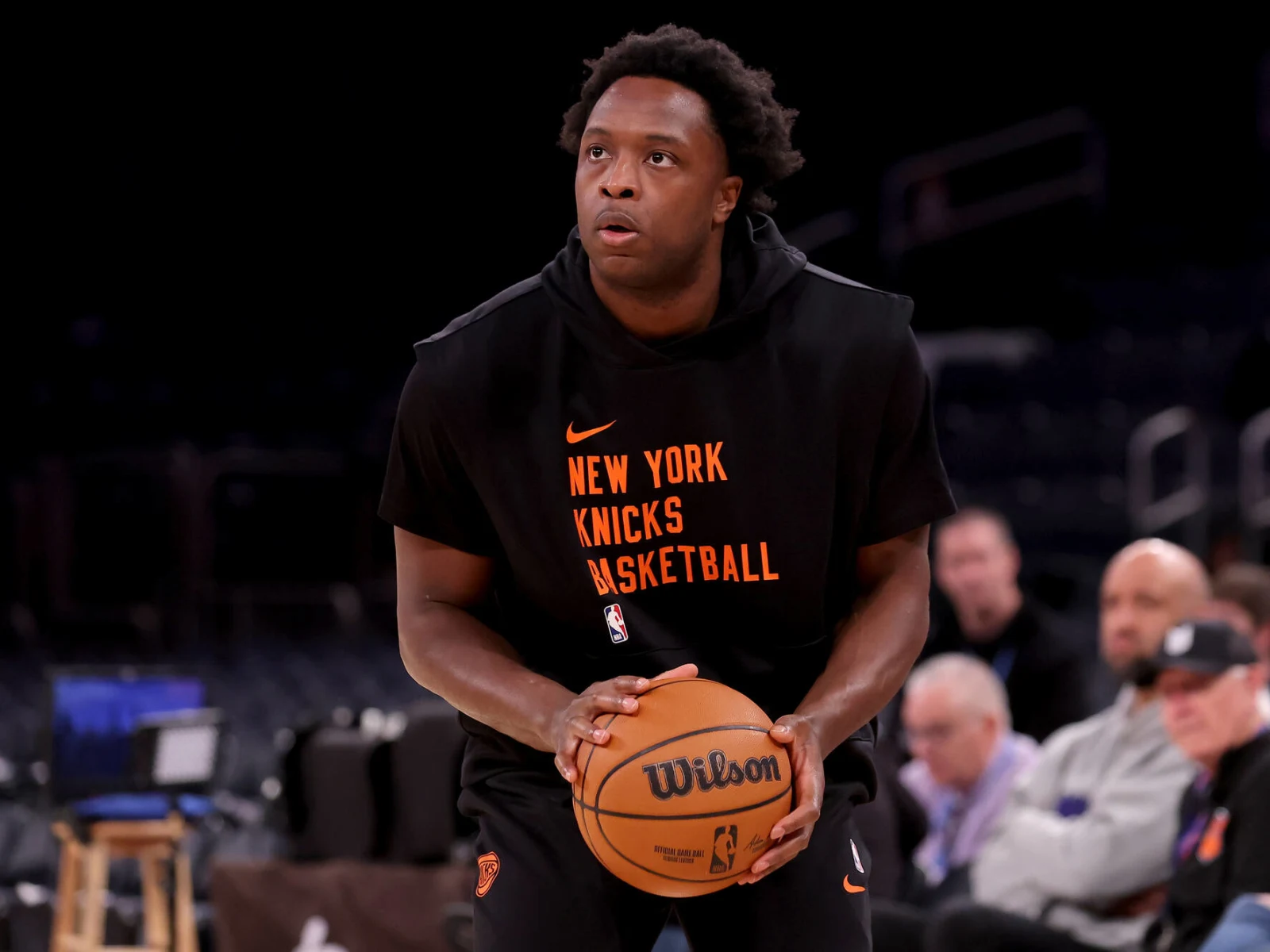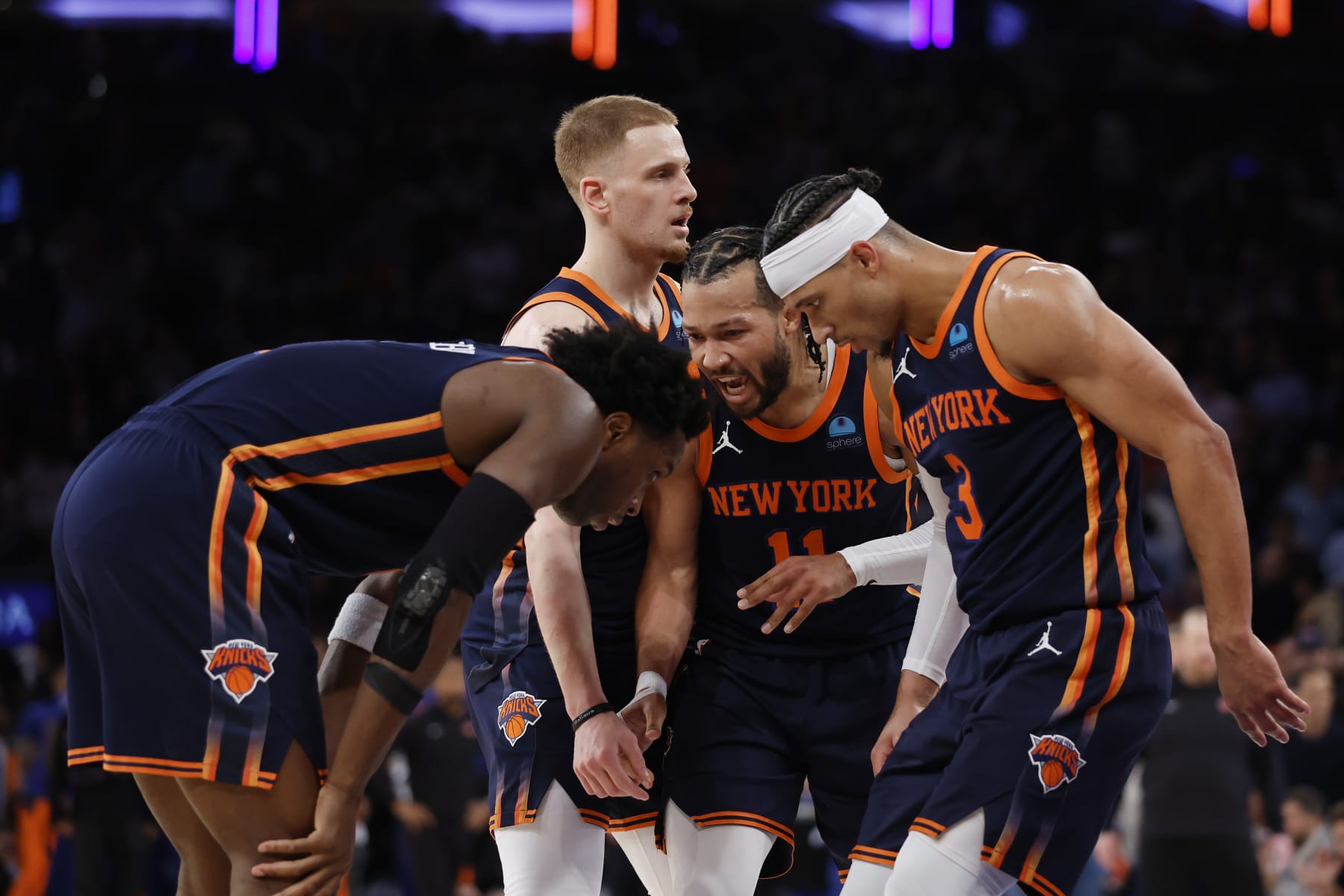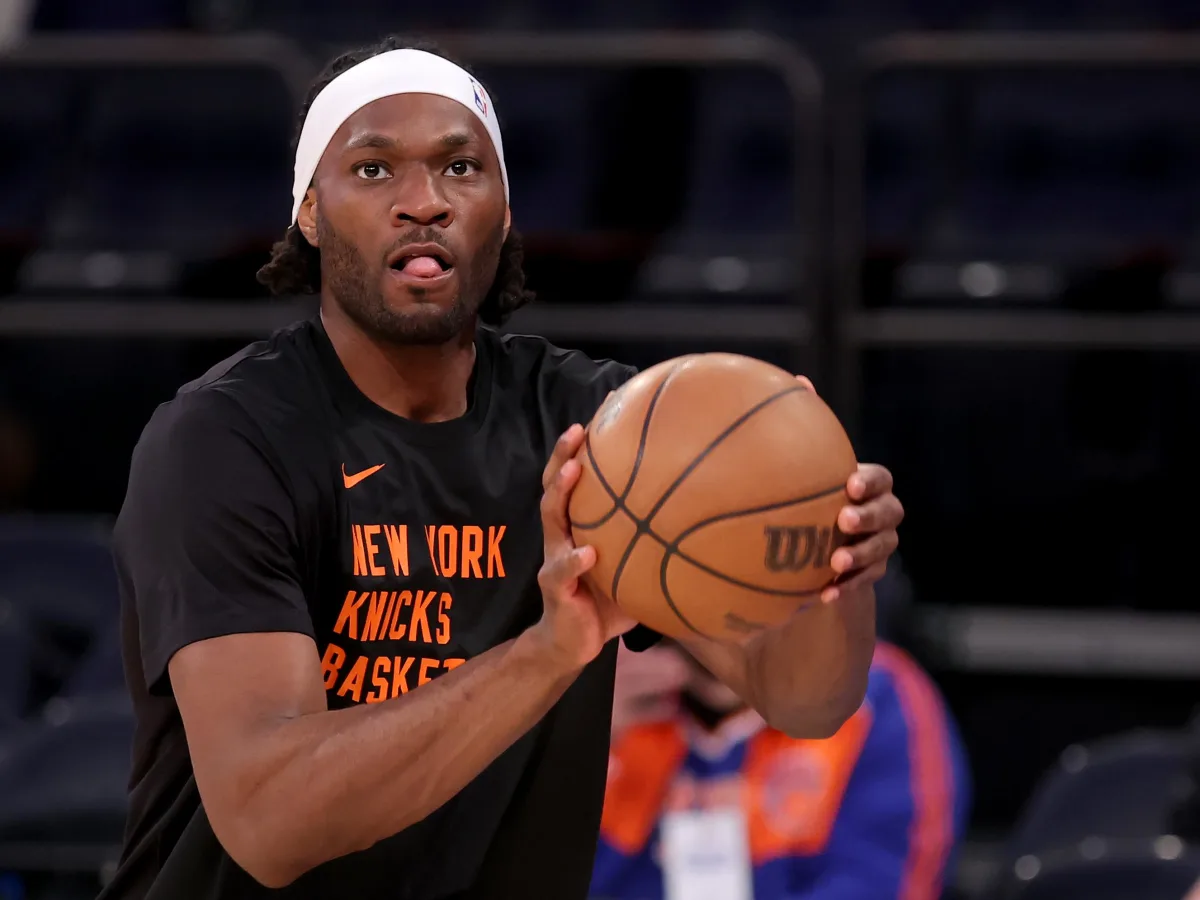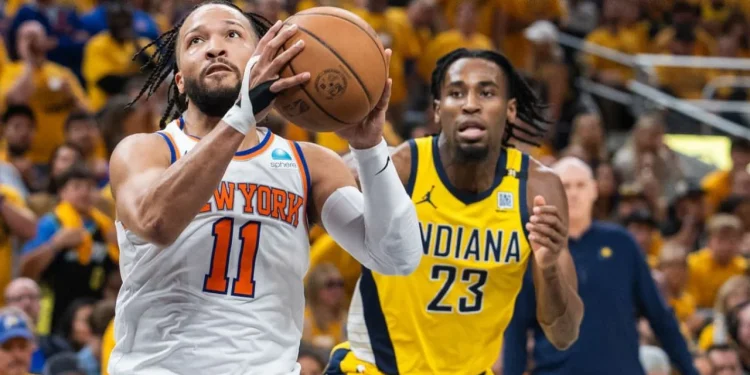Before looking ahead to the NBA Draft and free agency, the New York Knicks must reflect on their 2023-24 season. With 50 regular-season wins and a close call with the Eastern Conference finals, the team needs to evaluate what worked and what didn’t. Here are three key stats from this season that could shape their summer strategy.

Assessing the Starters’ Net Rating
Head coach Tom Thibodeau emphasizes the importance of net rating, which measures point differential per possession. When the New York Knicks had their full lineup, this stat highlighted their potential as one of the best teams.
New York went 12-2 in the 14 games following the midseason acquisition of OG Anunoby. This hot streak ended when Anunoby and All-Star forward Julius Randle got injured in late January. Randle’s dislocated shoulder sidelined him for the rest of the season, leaving the New York Knicks without their preferred starters.
During that 14-game span, the starting lineup of Jalen Brunson, Donte DiVincenzo, Anunoby, Randle, and Isaiah Hartenstein outperformed opponents by 16.6 points per 100 possessions. Out of 41 lineups that played as many minutes, the New York Knicks’ starters had the third-best net rating.
If this level of performance can be maintained next season, the New York Knicks could become title contenders. Before making any moves, they need to determine if this January success was a fluke or a sign of things to come.
If they believe the net rating reflects their true potential, they might be less inclined to alter the lineup. However, if they find reasons to doubt these results, they could be more aggressive in seeking upgrades.
Jalen Brunson’s On/Off Impact
The New York Knicks knew that trading RJ Barrett and Immanuel Quickley to the Toronto Raptors for Anunoby would impact their bench. Quickley was a Sixth Man of the Year runner-up, and Barrett, though a starter, was a crucial part of the second unit. These two were the primary creators when Brunson was off the court, and their absence was felt.
Despite this, acquiring Anunoby was deemed worth the trade. However, the drop-off in offensive production without Brunson was more severe than anticipated. Thibodeau’s lineup adjustments and a February trade for Alec Burks and Bojan Bogdanović didn’t solve the problem.
In the 50 games after the Anunoby trade, the New York Knicks’ offense was 20.3 points per 100 possessions better with Brunson on the court. This differential would have been the largest in the NBA if sustained over a full season.
This trend persisted into the playoffs, even with Brunson having some subpar shooting performances. The New York Knicks’ offense was still 9.7 points per 100 possessions better with him on the floor during the postseason. This significant gap cannot continue in 2024-25.
The New York Knicks need to find ways to boost their second-unit offense this summer. Miles McBride has proven himself as a reliable rotation player, but there are still questions about his ability to run an offense. The team might look for a larger guard or forward who can lead the reserves and complement McBride. Potential targets include Burks or another player who can facilitate the offense.

Brunson-Hartenstein Pick-and-Roll Dynamics
Two key offseason decisions involve OG Anunoby and Isaiah Hartenstein, both of whom will be free agents. Anunoby’s defense and Hartenstein’s chemistry with Brunson are crucial factors.
Hartenstein’s early Bird rights limit the New York Knicks’ offer to him, potentially making it challenging to retain him. However, his contribution goes beyond defense, floater, and passing. The Brunson-Hartenstein pick-and-roll was a game-changer for the Knicks.
According to Second Spectrum, the New York Knicks scored 1.25 points per possession when Brunson and Hartenstein ran a pick-and-roll. This action provided multiple offensive options, making it harder for defenders to focus solely on Brunson.
Hartenstein’s ability to attack, pass, and score in these situations made the offense more dynamic. Among 41 NBA pairings that ran at least 500 pick-and-rolls, Brunson and Hartenstein ranked third in efficiency. This effective combination is one reason Mitchell Robinson didn’t re-enter the starting lineup after recovering from ankle surgery.
In the playoffs, the difference between Robinson and Hartenstein was evident. When Robinson set screens for Brunson, opponents trapped more aggressively. Hartenstein’s presence gave Brunson more opportunities, and when trapped, Hartenstein created scoring chances.

Looking Forward: New York Knicks
The New York Knicks have a pivotal summer ahead as they prepare for the draft and free agency. Evaluating their performance, especially the net rating of their starters, Brunson’s impact, and the effectiveness of the Brunson-Hartenstein pick-and-roll, will guide their decisions.
If they can address their weaknesses and build on their strengths, the New York Knicks could be poised for a successful 2024-25 season.









